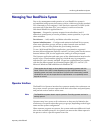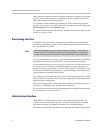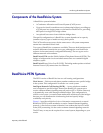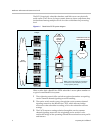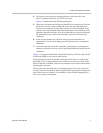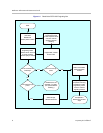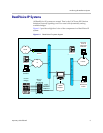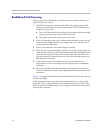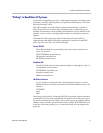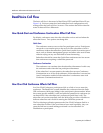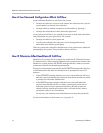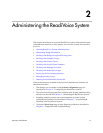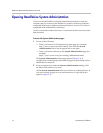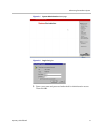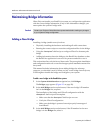
Introducing the ReadiVoice
®
System
Proprietary & Confidential 11
“Dialing” in ReadiVoice-IP Systems
For the sake of simplicity, we refer to “dialed phone numbers” throughout this
document. Actually, in IP telephony, end points are identified by a Universal
Resource Identifier (URI).
This URI resembles an email address: phonecontact@domain. Domain is
pretty much what one would expect: something.com or something.org, for
example. Phonecontact can be anything that identifies a device known to the
domain, such as a name, a 10-digit phone number, or perhaps an extension
number.
The ReadiVoice-IP system uses the Session Initiation Protocol (SIP) to
communicate with other IP telephony equipment. It sends out formal SIP
URIs, but users can “dial” any of the following:
Formal SIP URI
The URI described above preceded by the name of the protocol and a
colon. For instance:
SIP:3032235000@voyanttech.com
SIP:brent@voyanttech.com
SIP:5000@voyanttech.com
Simplified URI
The URI with the protocol name omitted (similar to omitting the “http:” in
a Web address). For instance:
3032235000@voyanttech.com
brent@voyanttech.com
5000@voyanttech.com
URI Without Domain
If your system is configured with a default domain and port, it routes
addresses that don’t specify a domain to the default domain and port. For
instance:
3032235000
brent
5000
Since most of the world is still using the PSTN and ordinary phone numbers,
your ReadiVoice-IP system undoubtedly sits behind one or more gateways to
the circuit-switched network. When your system is given an ordinary phone
number with no domain specified (such as the example 3032235000 above), it
routes the call to the gateway (or to a router that sends it to the appropriate
gateway).



